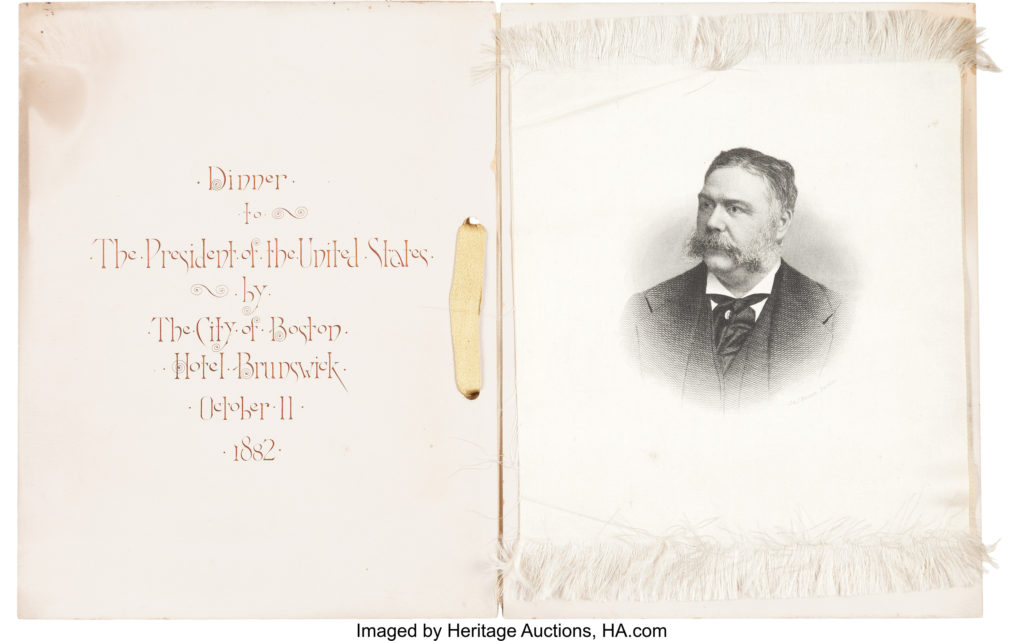
By Jim O’Neal
President Ulysses S. Grant appointed Chester Alan Arthur to the lucrative post of Collector of the Port of New York in 1871. Arthur held the job for seven years, and with an annual gross income of $50,000, was able to accumulate a modest fortune. He was responsible for the collection of about 75 percent of the entire nation’s duties from ships that landed in his jurisdiction, which included the entire coast of New York state, the Hudson River and ports in New Jersey.
In 1872, he raised significant contributions from Custom House employees to support Grant’s successful re-election for a second term. The spoils system was working as designed, despite occasional charges of corruption.
Five years later, the Jay Commission was created to formally investigate corruption in the New York Custom House and (future president) Chester Arthur was the primary witness. The commissioner recommended a thorough housecleaning and President Rutherford B. Hayes fired Arthur and then offered him an appointment as consul general in Paris. Arthur refused and went back to New York law and politics.
At the 1880 Republican National Convention, eventual nominee James Garfield first offered the VP slot to wealthy New York Congressman Levi Morton (later vice president for Benjamin Harrison), who refused. Garfield then turned to Chester Arthur, who, when he accepted, declared, “The office of the vice president is a greater honor than I ever dreamed of attaining.” It would be the only election he would ever win, but it was enough to foist him into the presidency.
The Garfield-Arthur ticket prevailed and after being sworn in on March 4, 1881, the 49-year-old Garfield’s first act was to turn and kiss his aged mother. It was the first time a president’s mother had ever been present at an inauguration. She would outlive her son by almost seven years. President James Polk (1845-1849) also died three years before his mother, the first time that had happened.
On the morning of July 2, President Garfield was entering the Baltimore and Potomac Railroad Station in Washington, D.C., where he was to board a train to attend the 25th reunion of his class at Williams College. A mentally disturbed office seeker, Charles J. Guiteau, shot him twice. He died 80 days later and for the fourth time in history, a man clearly only meant to be vice president ascended to the presidency.”
“CHET ARTHUR PRESIDENT OF THE UNITED STATES! GOOD GOD!”
Although President Arthur’s greatest achievement may have been the complete renovation of the White House, he surprised even some of his harshest critics. Mark Twain may have summed it up best: “I am but one in 55 million, still in the opinion of this one-fifty-five millionth of the country’s population, it would be hard to better President Arthur’s administration.”
Faint praise, yet probably accurate. (First, do no harm.)
 Intelligent Collector blogger JIM O’NEAL is an avid collector and history buff. He is president and CEO of Frito-Lay International [retired] and earlier served as chair and CEO of PepsiCo Restaurants International [KFC Pizza Hut and Taco Bell].
Intelligent Collector blogger JIM O’NEAL is an avid collector and history buff. He is president and CEO of Frito-Lay International [retired] and earlier served as chair and CEO of PepsiCo Restaurants International [KFC Pizza Hut and Taco Bell].
